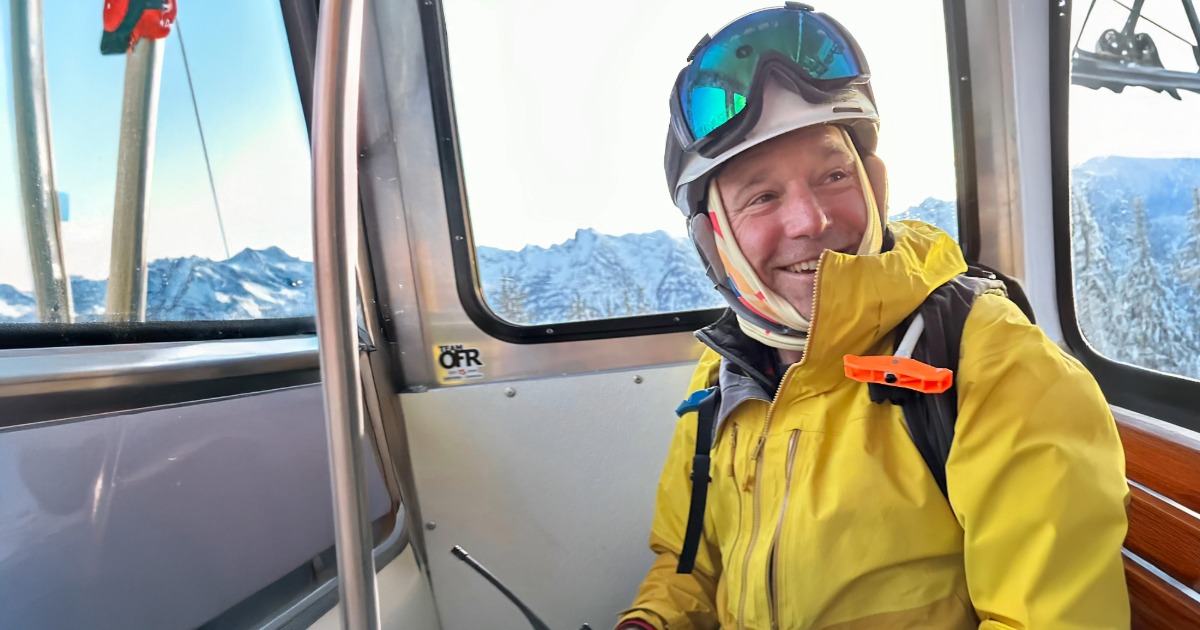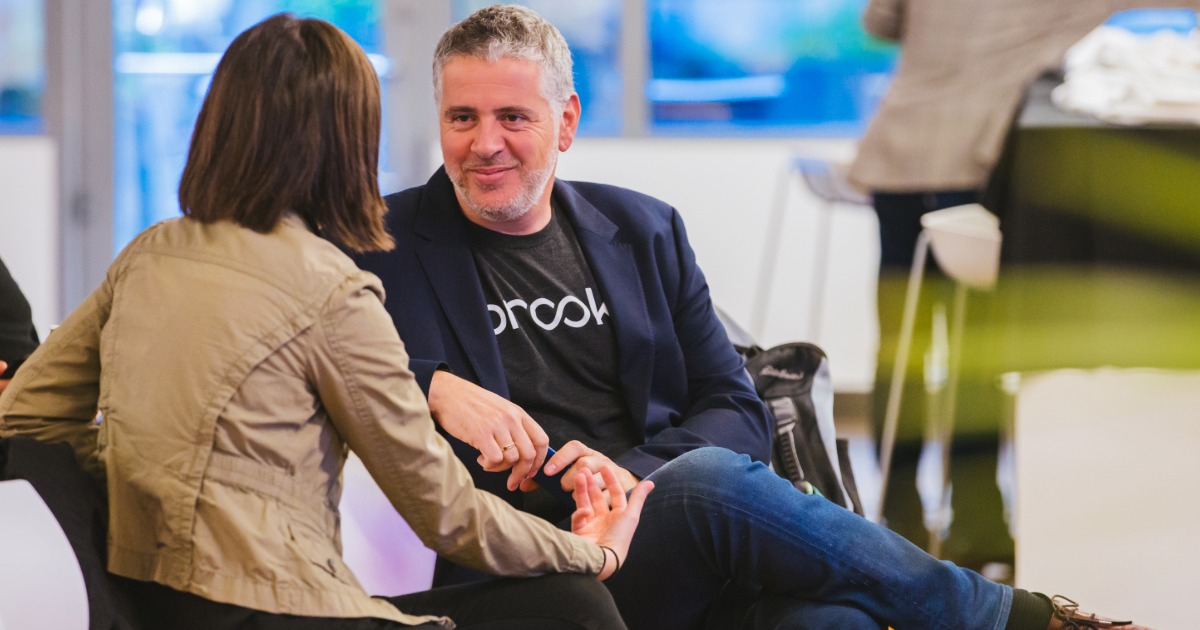Eric Dishman, Intel Fellow and director of health innovation and policy for Intel's Digital Health Group, has been working on issues around patient engagement – and the technologies that enable it – for more than 20 years.
Healthcare IT News spoke with him recently about the challenges to getting people more involved in their own care, the value of mobile health devices and patient portals, and his vision for a future with more empowered patients.
How have you seen the approach to patient-centered care evolve over the past few years? In a way, it's started to evolve with the whole mHealth movement. And the focus on consumer apps. That's certainly brought a lot of attention to the possibilities of patient-centered health. I'm a little concerned about the way it's going in that regard, though, because there's a lot of hype and very little reality.
I go to the mHealth conferences, and I'm the first person who will stand up and believe – and we have prototyped at Intel a range of mHealth solutions – I am absolutely convinced that the role of the smartphone in our life, it's going to be a coaching tool, it's going to be a diagnostic tool, it's going to be a reminding tool, and you're certainly seeing applications built out from that.
But people will say to me, 'There's 65,000 apps for health in the iTunes store.' But I say, '12,000 of them are diabetes apps, maybe six of them have ever been downloaded more than once, and two of them have been used continuously.'
When people go to iTunes, they're downloading Angry Birds. Yeah, you never see anything in the Top Ten list of most downloaded anything that's a healthcare app. And then if you look at usage, as opposed to downloads, it's even lower. So, directionally, it feels like there's all this attention, there's the 2.0 movement and patient-centered hype. But what no one's done yet is fundamentally change the role the patient is supposed to play, in terms of doctor-patient interaction.
We're approaching it at Intel from a different direction. We've been studying team-based care models from around the world. Forget the IT for a moment. Let's figure out – in France, in Germany, in the U.S. – where are good team-based care models where patients themselves are treated as a legitimate and trained member of their own care team. And there are some – not a lot, but there are some of these models we can learn from.
If that's the sort of seed, and you're forming the foundation of a new kind of expectation of the relationship between patient and doctor, then how could you use IT tools to enhance that relationship?
Because it's really about the relationship, and not the IT tools, but right now I feel like there's so much attention on the apps that are coming out. Until you really change the patient-physician relationship, and expand the care team to the patient, the family member, the neighbor, the untrained volunteer health workers, the nurse, the nurse practitioner, the doctor – when you can orchestrate among those, using social networking tools, reminding tools, online education and coaching, then it starts to be interesting.
So, as a technology company, we've kind of taken the opposite approach, studying people and then looking at how IT can scale things up.
Obviously, policymakers feel this is an important area, and they're making a big push to bring the patient more into the fold: Meaningful use Stage 2 puts patient engagement more at the forefront. But ultimately there's only so much IT can do. And then it's up to Joe Q. Public out there to take responsibility for his own health. And that means undoing the hundred years of patient passivity that we have trained people to live. It's a big challenge. I've been doing cancer patient advocacy for 22 years now. And the first thing you have to do is teach people not to come into their healthcare as some sort of passive automaton.
And not, quite frankly, to adopt this kind of entitlement mentality that says, 'Good care means everything thrown at me but the kitchen sink.' And undoing that expectation, particularly in the U.S., has been a big challenge.
Starting next year, in 2013, Intel employees will have some skin in the game, not just to adopt a consumer driven health plan, but to show that they're making meaningful progress toward health goals they make with their doctor, they will take a percentage of the savings we eke out of the program because of that.
For all this talk of bundled payments and ACOs, until the patient is part of the care team, and gets some reward, and there are carrots that can be customized to you, I don't think you're going to change a lot. There's a lot of talk about patient centered care, but it doesn't feel very patient centered.
What are some of the things you're perhaps a bit pessimistic about at the moment? I'm pessimistic that there's all this talk of care coordination, and meaningful use of electronic health records, and no one has asked the fundamental question of what are the standards for a care plan?
If you go into your physician in the U.S. today and you ask for a copy of your care plan, I'll bet fewer than 1 percent of them would be able to give you one.
If you're being discharged from a hospital where you've been for the past two weeks, there's a copy of your care plan. Everyone in the hospital has been using it to get you out on time. But once you walk out and walk into the office of your primary care doc … as an advocate, I tell people to ask for their care plans, and the physicians sort of look at them like, "What in the world are you talking about?"
There are, through AHRQ and other organizations, examples of standardized formats for care plans. But if we're really serious about behavior change, if we're really serious about coordinated care, how can you really accomplish any of those unless there's a care plan that says 'Here are the health goals this patient has for the next six months, year, three years.'
One of the things my policy team is trying to do around the world is say, "Care plan first, and then let the technology sort of reflect that care plan." It turns the EHR into a useful tool for everyone involved. Particularly when you're dealing with people with chronic conditions, or seniors – people seeing an average of 12 physicians.
Do you think there are physicians out there who don't want smart, engaged patients? After all, it makes their job harder, in a way. I think the financial incentives will change. We've been studying physicians around the world for the last decade, and they move from fee-for-service to some sort of salary based payment. Unbelievably resistant at first. Human nature. And then a month into it: 'Oh my god, this is why I went into medicine in the first place.'
The principle we've been trying to instill is called Care Flexibility. And the principle is this: If my physician can make life or death decisions about what scalpel he's going to use to do my kidney surgery. But they're not empowered to make a decision about what modality of care to do as a follow-up – is it secured messaging, is it an in-clinic visit, is it a home visit, is it a virtual visit\
Today we're sort of prescribing that all care should be face to face, and it should be in 30-minute visits you can bill for. It's crazy. We don't have any sort of flexibility in the creation of the relationship between the doctor and the patient. And I think that's one of the things that's kept this variety of tools we've seen over the last decade – mHealth, PHRs – from taking off.
I think there is resistance when you look at it from the filter of the old payment model. And right now there's so much anxiety about an ACO and what it means. But when [doctors] get on the other side of it, and they realize that, 'This patient needs five seconds of care and a quick phone call; this patient need 50 minutes of detailed investigation; and now I've got the modalities to customize care to whatever the patient's need is,' a lot of them will be so happy that kind of factory line mentality of seeing patients is gone, and now it's all about delivering the best quality care.
(Continued on page 2)
What about patient portals and personal health records? When Google Health went under, a lot of people said it was the death knell for PHRs. I hope it was the death knell for first-generation PHRs. I gave one of the first talks on PHRs, almost a decade ago. And even then we said the first-generation PHRs were going to be these ugly databases. Where they start to get interested is where the move into social media. I think there will be a lot of uptake with that. Full-disclosure, I sit on the board of Dossia, the PHR company we spun out of Intel, focused on employers. We're about to roll out the second PHR Dossia has created. I don't think PHRs are dead. We had to kill the first wave and start the second wave and say 'Stop focusing on the databases, and [instead] what are the verbs?'
It's not enough to engage patient with their health, to do that first they have to engage with the technology – and they have to want to do that.
And the way to do that is through social [media], right? Someone with a chronic disease, or some form of cancer, sign them up and immediately there are five or six people that fit a similar profile, that are six months ahead in this disease, and they're there to help pull me along. There you have the incentive: OK, I'll track some of my vital signs, and open up a secure folder and let my doctor see that.
So wave one of PHRs sort of missed social. Wave two is getting it. I think the other thing is to look at it globally. You've got Australia making a PHR available to every citizen in Australia by June of this year. Looking outside the U.S., the world is still moving toward the hockey puck for PHRs. We still haven't quite figured out the relationship and the financial model in the U.S. But it's time to reinvent what we've thought of as PHRs.
People do like going online to learn about their health. WebMD is one of the top 200 most-trafficked sites in the country. I think we're just at the point now where you can really personalize the experience to different needs people have. Somebody who's twenty-something and still feels like they're immortal, they're coming to a PHR because they and their wife are pregnant for the first time – it's a whole different set of needs than somebody who's 65 and as four different chronic conditions, it's a very different ballgame. So that same infrastructure needs to be customized for a lot of different services. That's the approach that Care Innovations, our spin-off company is taking, and that's the approach that Dossia is taking.
What are you most excited about in the near future? The 20th anniversary of the Rio Conference in Brazil [United Nations Conference on Environment and Development] is this summer. You see now, whole industries and whole nations competing to see who can be at the forefront of these [green] technologies.
I spoke at the pre-Rio Conference of the United Nations last week, to ministers from about 80 countries. Introduced the idea of what we call age-friendly cities. And said look, if Rio 20 years ago was about global warming, we want Rio this year to be about global aging. And if that was about sustainable energy, we want this to be about sustainable health.
I'm worried about the United States' global competitiveness on this issue. Countries are looking at how they invest in a 21st Century healthcare grid from the ground up. You can either retrofit a community or city or build a whole new one from scratch in places like China, where the health IT grid isn't going to connect a network of hospitals, but they're going to build the capacity into the workforce and into the home from the beginning. And there will be a smaller-footprint hospital that's cheaper, and an entirely different approach to care.
So now in many ways the emerging markets may be on the forefront of what I'm calling gray technologies for global aging – sort of the moral equivalent of green technologies for global warming. And they're going to bypass a lot of the U.S. and Western Europe, because they don't have to defend this install-base and fee-for-service model that's so hospital centric. They'll dive right into consumer engagement models because it makes economic sense for them to do so. And then they can build a broadband infrastructure and HIE – this is why Australia is making a personal health record available to every citizen this summer, because they see they need to build this 21st grid – have to be age-friendly given worldwide demographics. Getting the UN on the bandwagon with that. Working with the WHO. Taking a lot of our learning that we did in all 20 companies and scaling that message out.
It's an interesting conundrum, though, when it comes to engagement. Most people over age 65 aren't using social networks or smartphones. Isn't it a challenge to engage them? Convincing those older people's children that they're capable of doing it is one of the challenges. We've found, in our studies in these countries is that older people who are trained how to use the technologies – and there's a clear value proposition for them to do so – then they can and will learn it.
We've taken mid-80s-year-olds with some form of dementia and taught them how to use PC-based technologies and social networking. But the value has to be clear to the senior, and you have to take the time to train them.
The challenge from a global perspective is to look at both ends of the age continuum. By 2050 we're going to have 7 billion people on the planet, 2 billion of them are going to be over the age of 60. No matter what, over the next three or four decades, we have a legacy of chronic care that's going to bankrupt nations if we don't find a new model.
At the same time, we've got to start now, building the same prevention mentality and the behavioral economic training of the younger generation, not to end up with the same epidemic of chronic disease that they have.
Are you ultimately optimistic? Yes. While there's lots of confusion and fear and uncertainty and doubt right now in the U.S. about how these financial reforms are going to play out. Everyone needs to remember that this is the beginning of the transformation and not the end. But without some radical changes, the innovations that are more focused on prevention and early detection and wellness and consumer engagement are never going to happen.
The good news to me, we at Intel, were less focused on the U.S. until the health reform bill passed. When it did, we said, 'alright, we need to start looking at building an R&D infrastructure in the U.S. again. Now it's getting interesting.' So as long as we stay the course and don't start building ridiculous expectations and realize it's not going to change overnight … we're starting to head in the right direction.


